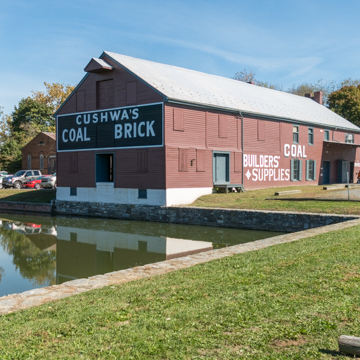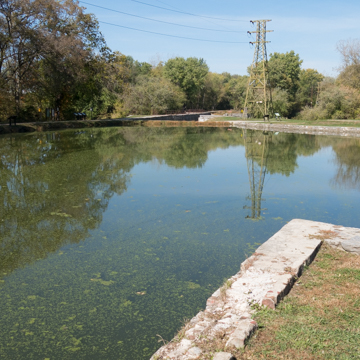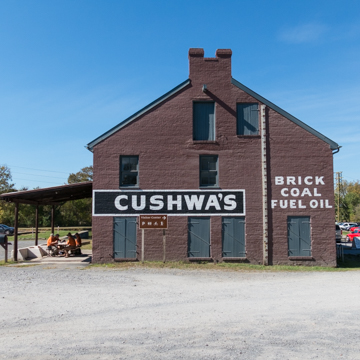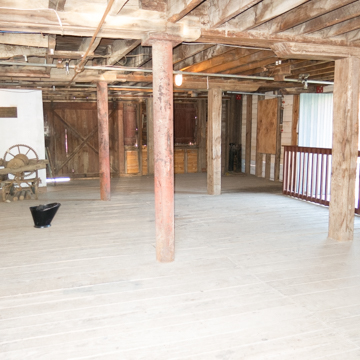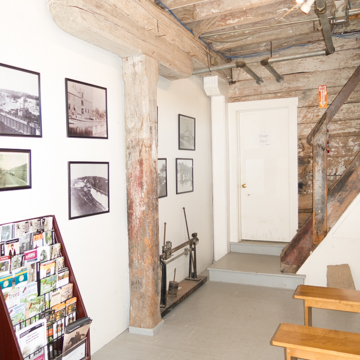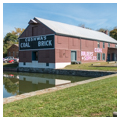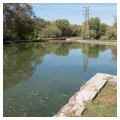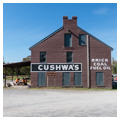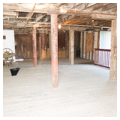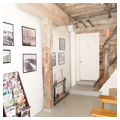The large two-story brick and frame warehouse at Cushwa’s Basin predates construction of the canal. When the canal was completed, the basin created here was one of the few places where a boat could turn around, and so Victor Cushwa put a brick addition onto his frame flour and feed warehouse to accommodate the increased business. Williams-port became a busy port for canal traffic, with many boats lining Cushwa’s Basin waiting to unload or load. The Cushwa family dealt in coal, brick, iron, cement, and plaster for many years. Coal was transported inland from here to Hagerstown via the Western Maryland Railroad. The warehouse, painted with “Cushwa’s Brick Coal” on the gable end facing the basin, was acquired by the National Park Service in the 1970s. Currently it serves as a visitor’s center for C&O Canal Historical Park and a popular access point for the towpath.
You are here
CHESAPEAKE AND OHIO CANAL, CUSHWA WAREHOUSE
If SAH Archipedia has been useful to you, please consider supporting it.
SAH Archipedia tells the story of the United States through its buildings, landscapes, and cities. This freely available resource empowers the public with authoritative knowledge that deepens their understanding and appreciation of the built environment. But the Society of Architectural Historians, which created SAH Archipedia with University of Virginia Press, needs your support to maintain the high-caliber research, writing, photography, cartography, editing, design, and programming that make SAH Archipedia a trusted online resource available to all who value the history of place, heritage tourism, and learning.






